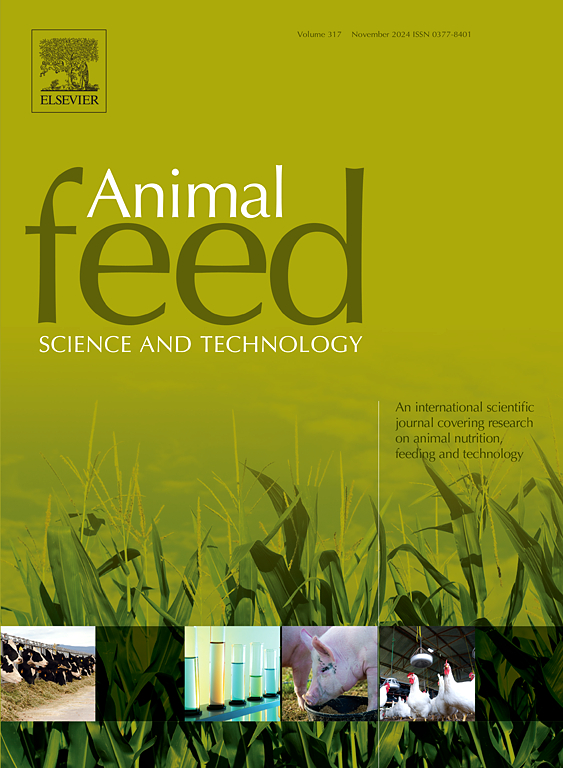Effect of yeast culture supplementation on rumen microbiota, regulation pathways, and milk production in dairy cows of different parities
IF 2.5
2区 农林科学
Q1 AGRICULTURE, DAIRY & ANIMAL SCIENCE
引用次数: 0
Abstract
The present study elucidated the alterations and distinctions in the regulatory pathways of the rumen microbiota, metabolome, and oxidative stress–immune homeostasis in primiparous and multiparous cows after administering yeast cultures (YCs) during the late periparturient period. This study aimed to evaluate the effect of these changes on productive performance and health status during lactation. A total of 60 Holstein cows with similar body condition score (3.5 ± 0.25) were selected and divided into four groups based on parity— including 30 primiparous cows (parity 1.0 ± 0.00) and 30 multiparous cows (parity 2.6 ± 0.14)—and postpartum serum reactive oxygen species levels (100–200 ng/mL) using the following pairing principle: primiparous control (C1), multiparous control (C2), primiparous experimental (T1), and multiparous experimental (T2). The control groups received a basal diet, whereas the experimental groups received the same basal diet supplemented with YC (150 g/head/d) at the same feeding time. Cows in the experimental groups exhibited significantly higher dry matter intake during early lactation (22.26 ± 0.12 kg/d) than those in the control groups (21.66 ± 0.22 kg/d) (P < 0.05). YC supplementation significantly increased milk production in postpartum cows (P < 0.01). Furthermore, the experimental group showed notably improved antioxidant capacity and immunity compared to those in the control group, with primiparous cows (T1) outperforming multiparous cows (T2). YC supplementation notably increased the rumen abundance of beneficial microbes, including Ruminococcus and Acetobacter, in the T1 group. Although the T2 group also showed an increase in Bifidobacterium, Ruminococcus, and Acetobacter, it exhibited a lower abundance of Butyrivibrio than the C2 group. YC supplementation significantly reduced the rumen abundance of Moraxella. Lastly, metabolomic analysis revealed that YC supplementation significantly upregulated specific metabolites such as spermine, spiraeoside, and betaine in the rumen of primiparous dairy cows, enhancing their antioxidant capacity and immunity. Additionally, metabolites such as DL-threonine, 1-methylhistamine, and phenylephrine were upregulated in multiparous cows, influencing branched-chain amino acid biosynthesis and metabolism and promoting energy balance and metabolism. In conclusion, YC enhances production in dairy cows by promoting specific microbial pathways and optimizing nutritional metabolism, with distinct effects observed between primiparous and multiparous cows.
求助全文
约1分钟内获得全文
求助全文
来源期刊

Animal Feed Science and Technology
农林科学-奶制品与动物科学
CiteScore
6.00
自引率
6.20%
发文量
266
审稿时长
3 months
期刊介绍:
Animal Feed Science and Technology is a unique journal publishing scientific papers of international interest focusing on animal feeds and their feeding.
Papers describing research on feed for ruminants and non-ruminants, including poultry, horses, companion animals and aquatic animals, are welcome.
The journal covers the following areas:
Nutritive value of feeds (e.g., assessment, improvement)
Methods of conserving and processing feeds that affect their nutritional value
Agronomic and climatic factors influencing the nutritive value of feeds
Utilization of feeds and the improvement of such
Metabolic, production, reproduction and health responses, as well as potential environmental impacts, of diet inputs and feed technologies (e.g., feeds, feed additives, feed components, mycotoxins)
Mathematical models relating directly to animal-feed interactions
Analytical and experimental methods for feed evaluation
Environmental impacts of feed technologies in animal production.
 求助内容:
求助内容: 应助结果提醒方式:
应助结果提醒方式:


